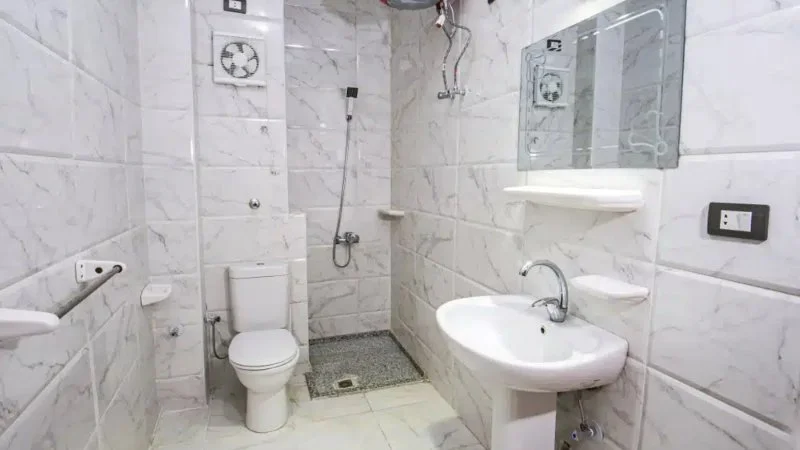In the UK, ensuring proper ventilation in bathrooms is essential for maintaining a healthy indoor environment. With high humidity levels from showers, baths, and general use, bathrooms are prone to mold growth and damp conditions that can damage property and lead to health problems. To address these concerns, bathroom extractor fans play a vital role in improving airflow and reducing moisture. In this article, we will explore the bathroom extractor fan regulations uk, why they are important, and how to comply with them.
Why Are Bathroom Extractor Fans Important?
Bathrooms are particularly vulnerable to moisture buildup, which can lead to mold, mildew, and dampness. Poor ventilation can also cause the growth of bacteria and fungi, creating an unhealthy environment for residents. This is why bathroom extractor fans are crucial—they help remove excess moisture from the air and prevent the buildup of harmful substances.
The extractor fan works by drawing humid air out of the bathroom, preventing condensation and ensuring that the room remains dry and fresh. Proper ventilation also helps to reduce the risk of respiratory issues and allergies caused by damp environments.
Building Bathroom Extractor Fan Regulations UK
In the UK, there are specific building regulations that require the installation of extractor fans in bathrooms, particularly those without open windows. These regulations ensure that bathrooms are well-ventilated. Which helps to prevent mold and other moisture-related issues.
The key regulations that apply to bathroom extractor fans include:
- Part F of the Building Regulations (Ventilation): This regulation focuses on ensuring that there is sufficient ventilation in all parts of a building, including bathrooms. The primary goal of Part F is to prevent the build-up of moisture and ensure a healthy indoor environment.
- Minimum Airflow Requirements: The regulations specify the minimum airflow rate for bathroom extractor fans. Generally, an extractor fan must be able to achieve a minimum rate of 15 liters per second (l/s) of air movement in a standard bathroom. This removes enough moisture from the air to prevent condensation.
- Fan Placement and Sizing: UK building regulations require installing extractor fans in a suitable location within the bathroom, usually above the shower or bath area. The installer must ensure the fan appropriately fits the bathroom’s size and layout. For larger bathrooms, the installer may need to use a more powerful fan to achieve the necessary airflow.
How to Comply with Bathroom Extractor Fan Regulations UK
To ensure compliance with UK regulations for bathroom extractor fans, follow these steps:
- Choose the Right Fan: Select an extractor fan that meets the required airflow rate for your bathroom. As mentioned earlier, the minimum airflow rate for a standard bathroom is 15 l/s. However, if you have a larger bathroom or multiple showers, a more powerful fan may be necessary.
- Proper Installation: The fan must be installed in a location that allows it to effectively remove moisture from the bathroom. This typically means placing the fan above the shower or bath, where humidity levels are highest. Ensure you wire the fan according to the regulations, paying special attention to the use of isolator switches for safety.
- Consider Automatic Operation: Many modern extractor fans are designed to operate automatically. These fans turn on when humidity levels in the bathroom rise above a certain threshold and turn off when the air is dry. This is an effective way to ensure that the fan operates when needed and complies with the regulations.
- Ensure Adequate Ducting: The ducting used to expel the moist air must be of the correct size and type. It must be capable of carrying the moist air outside the building without obstruction. Ensure that the ducting is installed in a way that prevents backdrafts or air leaks, which could reduce the fan’s efficiency.
When is a Bathroom Extractor Fan Not Required?
Specific cases may not require a bathroom extractor fan:
- Bathrooms with Open Windows: If your bathroom has a window that opens to the outside and is at least one square meter in size, you might not need to install an extractor fan. However, you should leave the window open during use to ensure proper ventilation.
- Small Bathrooms: In some instances, if the bathroom is small and there is sufficient natural ventilation, an extractor fan may not be mandatory. However, this will depend on the specific circumstances, and it’s always advisable to consult with a professional to ensure compliance with building regulations.
Maintaining Your Bathroom Extractor Fan
After you install your bathroom extractor fan, you must maintain it to ensure its effectiveness:
- Clean Regularly: Dust and grime can build up on the fan blades over time, which can reduce the fan’s performance. Regularly clean the fan and its surroundings to ensure it continues to work efficiently.
- Check for Blockages: Ensure the ducting is free of blockages and that air can flow freely. Blockages can reduce airflow and lead to a buildup of moisture.
- Inspect for Wear and Tear: Over time, extractor fans can wear out. Make sure to inspect the fan regularly for signs of wear, and replace it if necessary to keep your bathroom properly ventilated.
Conclusion: Understanding Bathroom Extractor Fan Regulations UK
Bathroom extractor fan regulations in the UK are in place to protect the health and safety of residents by ensuring proper ventilation and moisture control. By following the requirements outlined in the building regulations. You can reduce the risk of dampness, mold, and other related problems in your bathroom.
Installing an appropriate extractor fan with the correct airflow, positioning, and ducting is essential for compliance and for maintaining a healthy indoor environment. Regular maintenance and choosing modern, automatic fans can help keep your bathroom well-ventilated and in line with UK regulations, ensuring your home remains safe and comfortable for all occupants.

